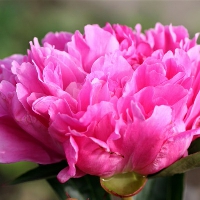When filling in college entrance examination volunteers, parents and examinees should also pay attention to the setting of different batches of volunteer structures. There are two types of voluntary structure, namely, sequential voluntary and parallel voluntary. The following is a detailed introduction for your reference.
1. The order of volunteers is to fill in the order, one by one, and the first one is not recorded, starting from the second one.
2. According to the order of recording, it is more dangerous when the first volunteer is not admitted, and the second volunteer will probably take a major that is not full of applicants.
3. There is no order for parallel volunteers. They are all in the same order. The first volunteer fails to enroll and starts the second volunteer.
4. By analogy, there is only one opportunity for sequential volunteering and at least six or even nine times for parallel volunteering, which reduces the difficulty of admission.
Parallel volunteering is a new mode of college entrance examination volunteering. The so-called parallel volunteer means that a volunteer includes several parallel colleges and universities. It means that when filling in college entrance examination volunteers, examinees can fill in several parallel colleges and universities at the same time in the specified batch.
When enrolling, the principle of "giving priority to scores and following the will" shall be followed. Those who are not enrolled on the same subject score line shall be put on the file at one time according to the order of total scores from high to low, that is, all candidates shall be in a queue, and those with high scores shall be put on the file first. When each candidate files, he/she will file to the top ranked institution with plan balance according to the order of the institutions filled in by the candidate.
The so-called "sequential volunteering" is to pitch according to "volunteering+score". In the process of admission in one batch, for schools, all schools can only simultaneously enroll candidates in the same order; For examinees, it means that all examinees above a certain batch score line can only be volunteers in the same order at the same time.
Sequential volunteering means that multiple colleges and universities set up in the same enrollment batch have a sequence of volunteering, which is expressed as: first, second, etc. For example, for a first volunteer college and a second volunteer college, when the computer files, the volunteers from the same college will queue up separately, and then file to the corresponding college according to the scores from high to low.

